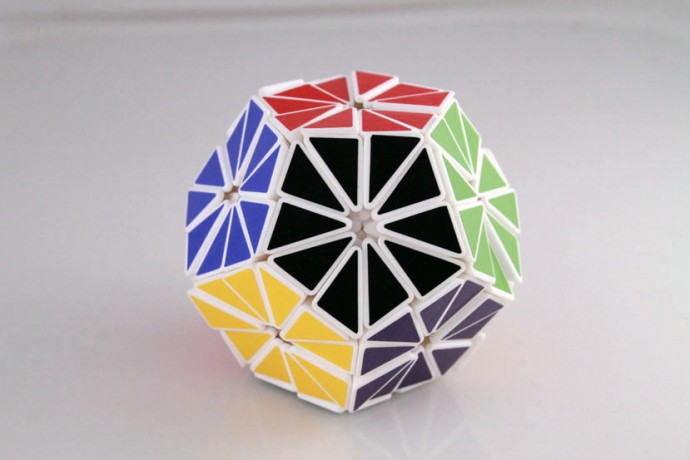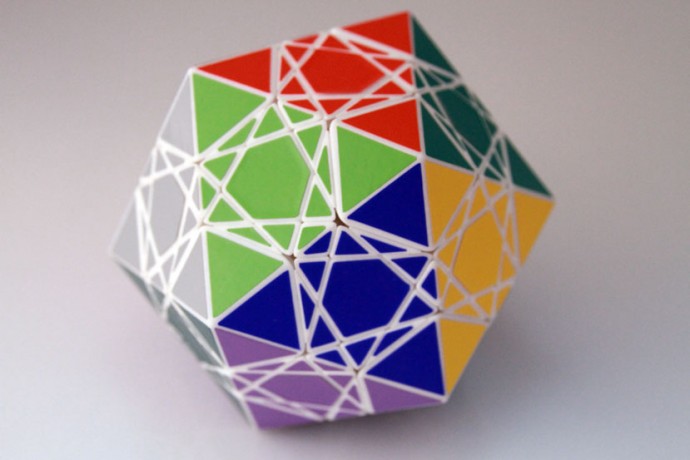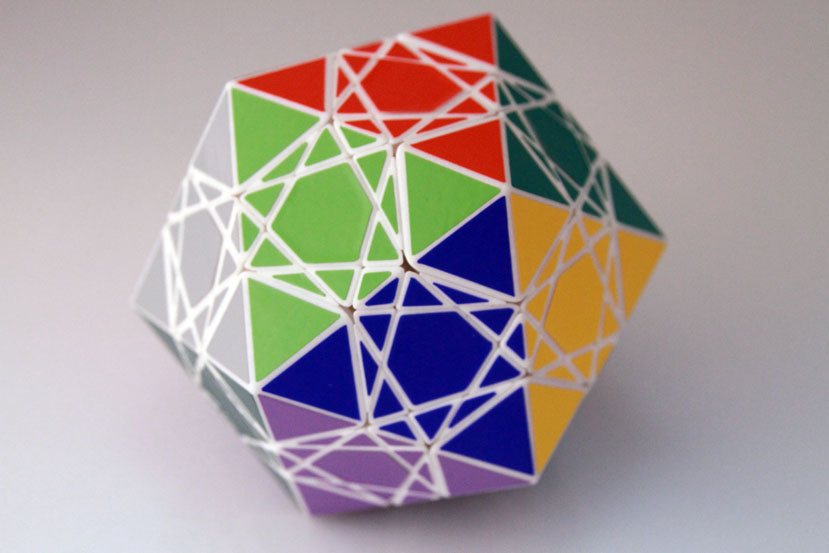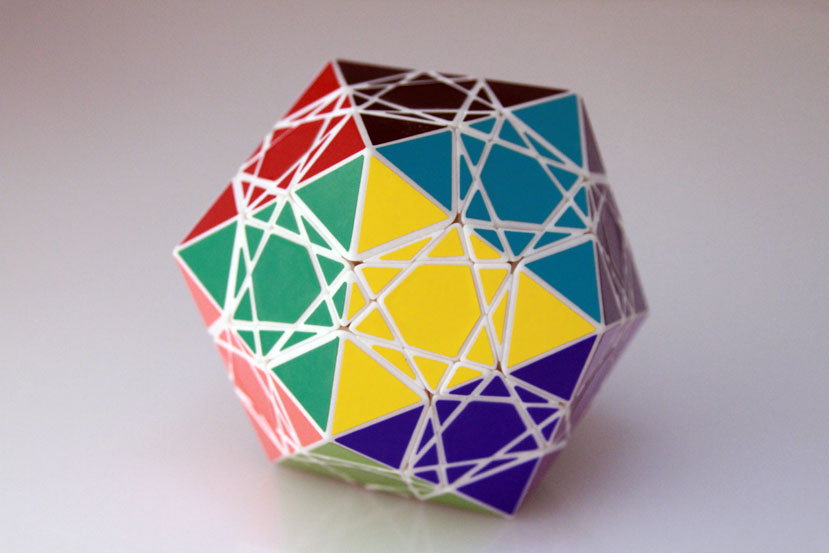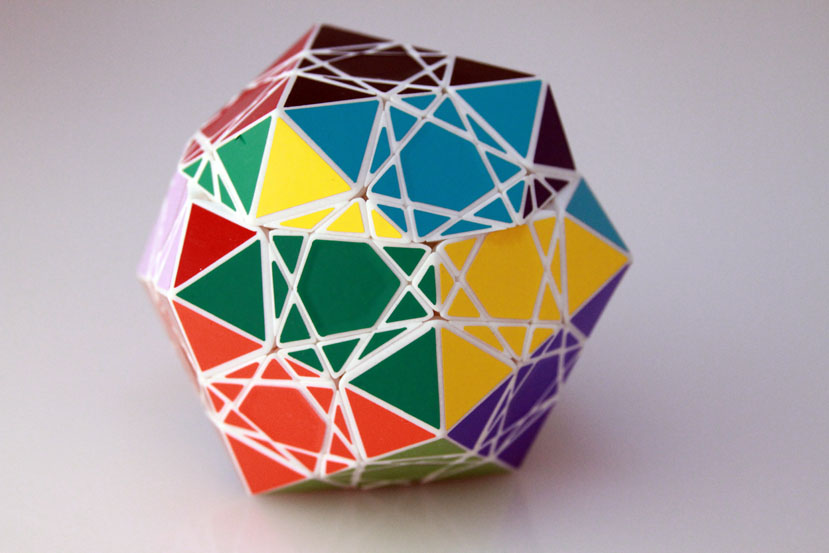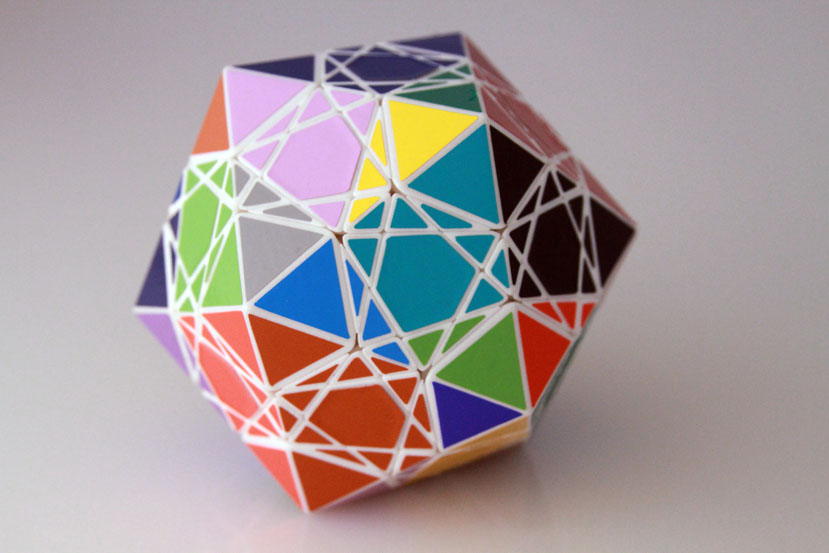The following explanation was posted on TwistyPuzzles.com to explain my experiments with stochastic rails.
I was thinking recently about ways in which a Big Chop might be able to be made using 60 identical copies of 2 parts. Thinking about the cheats we sometimes use to estimate tough integrals in computer science, I thought of an idea. Each part would have one shell or rail at the same level. When two parts near each other, they collide and one randomly goes up while the other randomly goes down.
The parts are designed so that no matter which wins, the rails interlock.
I have designed 6 versions of the Big Chop puzzle using variations on this theme. I’m not at a stopping point, but I wanted to share my progress with everyone here that’s interested in mechanisms.
Here are a few images of a variation with wider rails, and holes cut in the rail arms to make them springlike.
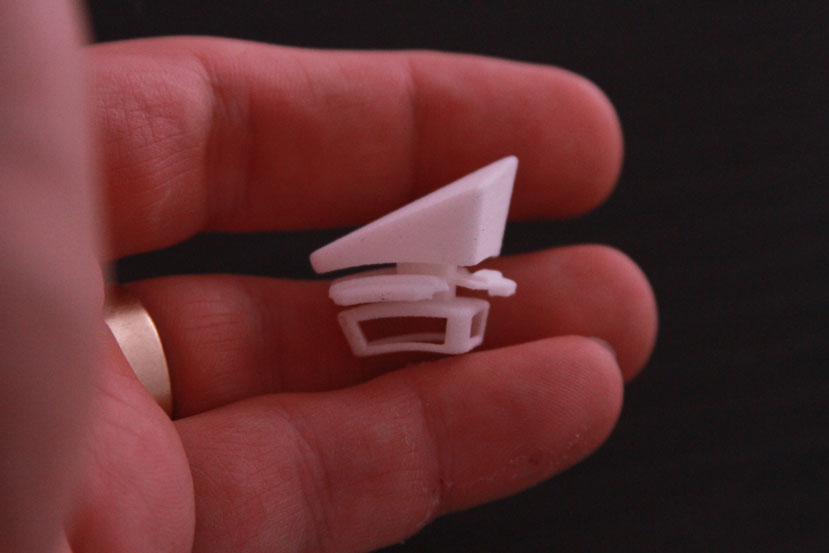
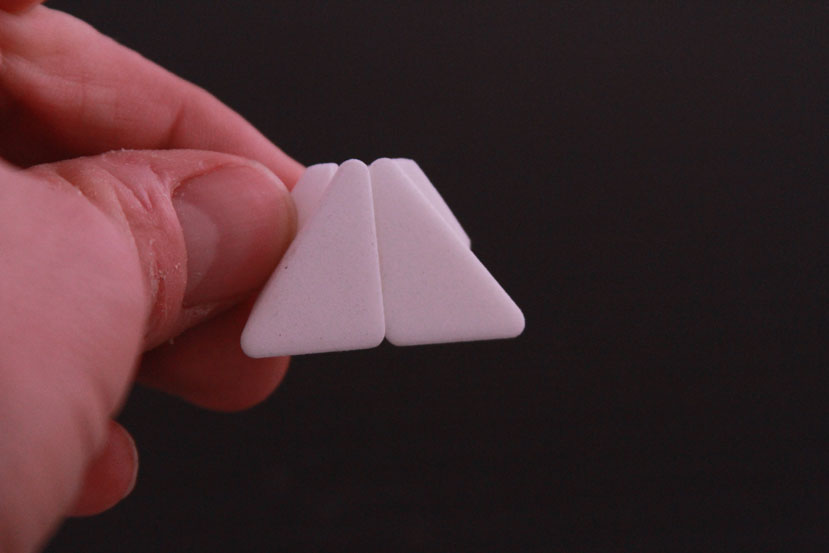

You can see that they hold together, randomly fitting whichever way I happen to push them together like velcro.
Here’s a demo video demonstrating the velcro like quality.
I have tried multiple rail sizes and widths. Strangely thinner rails seem more successful. These images show the thinner rails:

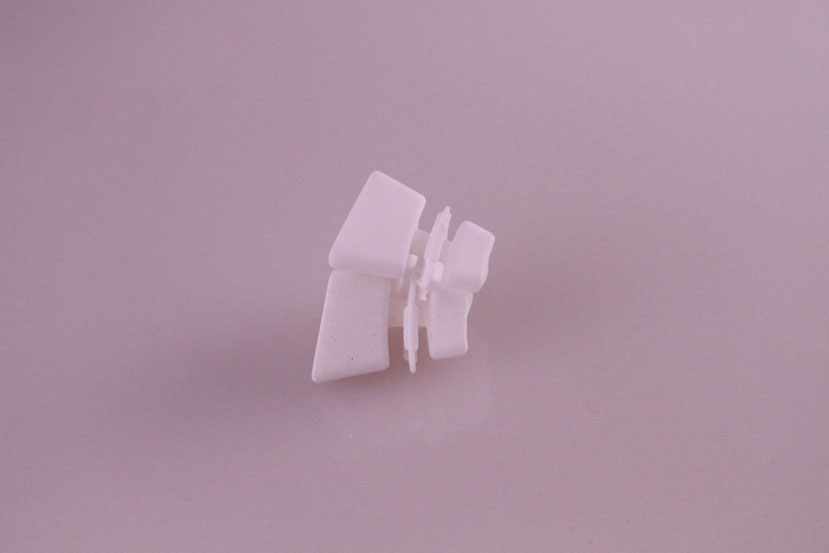
I have also tried stochastic combs, which are collections of shells that randomly go one way or the other like “bristle blocks”. These seem to collide much more making the puzzle useless. But I think I’ll try again sometime anyway.
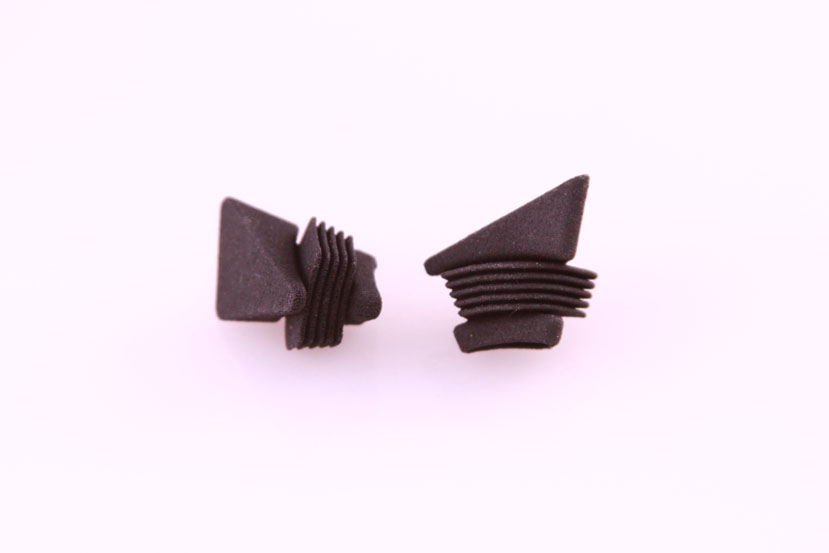
Here’s an assembled example using the most successful design to date.

Turning is just painful.
The stochastic moments all seem to want resolution by hand-jostling, even though small collections of parts work well.
Since turning is so tough I sped up the video 8x. Yeah, I was resolved to get one turn.

